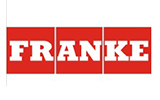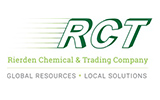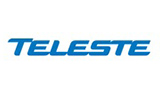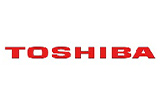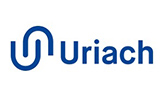Table of Contents
Chapter 1. Global Gaming Market Executive Summary
1.1. Global Gaming Market Size & Forecast (2025-2033)
1.2. Regional Summary
1.3. Segmental Summary
1.3.1. By Device
Console
Mobile
Computer
1.3.2. By Type
Online
Offline
1.4. Key Trends
1.5. Recession Impact
1.6. Analyst Recommendation & Conclusion
Chapter 2. Global Gaming Market Definition and Research Assumptions
2.1. Research Objective
2.2. Market Definition
2.3. Research Assumptions
2.3.1. Inclusion & Exclusion
2.3.2. Limitations
2.3.3. Supply Side Analysis
2.3.3.1. Availability
2.3.3.2. Infrastructure
2.3.3.3. Regulatory Environment
2.3.3.4. Market Competition
2.3.3.5. Economic Viability (Consumer's Perspective)
2.3.4. Demand Side Analysis
2.3.4.1. Regulatory Frameworks
2.3.4.2. Technological Advancements
2.3.4.3. Environmental Considerations
2.3.4.4. Consumer Awareness & Acceptance
2.4. Estimation Methodology
2.5. Years Considered for the Study
2.6. Currency Conversion Rates
Chapter 3. Global Gaming Market Dynamics
3.1. Market Drivers
3.1.1. Advancements in Technology and Connectivity
3.1.2. Growing Consumer Demand for Immersive Experiences
3.1.3. Expansion of Mobile and Online Gaming Platforms
3.2. Market Challenges
3.2.1. Regulatory Scrutiny and Data Privacy Concerns
3.2.2. Monetization Pressures and Competitive Intensity
3.3. Market Opportunities
3.3.1. Rise of Esports and Streaming Culture
3.3.2. Integration of AR/VR and Cloud Gaming Innovations
3.3.3. Expanding Markets in Emerging Economies
Chapter 4. Global Gaming Market Industry Analysis
4.1. Porter's 5 Force Model
4.1.1. Bargaining Power of Suppliers
4.1.2. Bargaining Power of Buyers
4.1.3. Threat of New Entrants
4.1.4. Threat of Substitutes
4.1.5. Competitive Rivalry
4.1.6. Futuristic Approach to Porter's 5 Force Model
4.1.7. Porter's 5 Force Impact Analysis
4.2. PESTEL Analysis
4.2.1. Political
4.2.2. Economical
4.2.3. Social
4.2.4. Technological
4.2.5. Environmental
4.2.6. Legal
4.3. Top Investment Opportunity
4.4. Top Winning Strategies
4.5. Disruptive Trends
4.6. Industry Expert Perspective
4.7. Analyst Recommendation & Conclusion
Chapter 5. Global Gaming Market Size & Forecasts by Device 2025-2033
5.1. Segment Dashboard
5.2. Global Gaming Market: Device Revenue Trend Analysis, 2022 & 2032 (USD Million/Billion)
5.2.1. Console
5.2.2. Mobile
5.2.3. Computer
Chapter 6. Global Gaming Market Size & Forecasts by Type 2025-2033
6.1. Segment Dashboard
6.2. Global Gaming Market: Type Revenue Trend Analysis, 2022 & 2032 (USD Million/Billion)
6.2.1. Online
6.2.2. Offline
Chapter 7. Global Gaming Market Size & Forecasts by Region 2025-2033
7.1. North America Gaming Market
7.1.1. U.S. Gaming Market
7.1.1.1. Device Breakdown - Revenue & Forecasts, 2025-2033
7.1.1.2. Type Breakdown - Revenue & Forecasts, 2025-2033
7.1.2. Canada Gaming Market
7.2. Europe Gaming Market
7.2.1. UK Gaming Market
7.2.2. Germany Gaming Market
7.2.3. France Gaming Market
7.2.4. Spain Gaming Market
7.2.5. Italy Gaming Market
7.2.6. Rest of Europe Gaming Market
7.3. Asia-Pacific Gaming Market
7.3.1. China Gaming Market
7.3.2. India Gaming Market
7.3.3. Japan Gaming Market
7.3.4. Australia Gaming Market
7.3.5. South Korea Gaming Market
7.3.6. Rest of Asia-Pacific Gaming Market
7.4. Latin America Gaming Market
7.4.1. Brazil Gaming Market
7.4.2. Mexico Gaming Market
7.4.3. Rest of Latin America Gaming Market
7.5. Middle East & Africa Gaming Market
7.5.1. Saudi Arabia Gaming Market
7.5.2. South Africa Gaming Market
7.5.3. Rest of Middle East & Africa Gaming Market
Chapter 8. Competitive Intelligence
8.1. Key Company SWOT Analysis
8.1.1. Tencent Holdings Limited
8.1.2. Sony Interactive Entertainment
8.1.3. Microsoft Corporation
8.2. Top Market Strategies
8.3. Company Profiles
8.3.1. Tencent Holdings Limited
8.3.1.1. Key Information
8.3.1.2. Overview
8.3.1.3. Financial (Subject to Data Availability)
8.3.1.4. Product Summary
8.3.1.5. Market Strategies
8.3.2. Nintendo Co., Ltd.
8.3.3. Electronic Arts Inc.
8.3.4. Activision Blizzard, Inc.
8.3.5. Take-Two Interactive Software, Inc.
8.3.6. Ubisoft Entertainment SA
8.3.7. NetEase, Inc.
8.3.8. Bandai Namco Holdings Inc.
8.3.9. Epic Games, Inc.
8.3.10. SEGA Corporation
Chapter 9. Research Process
9.1. Research Process
9.1.1. Data Mining
9.1.2. Analysis
9.1.3. Market Estimation
9.1.4. Validation
9.1.5. Publishing
9.2. Research Attributes






